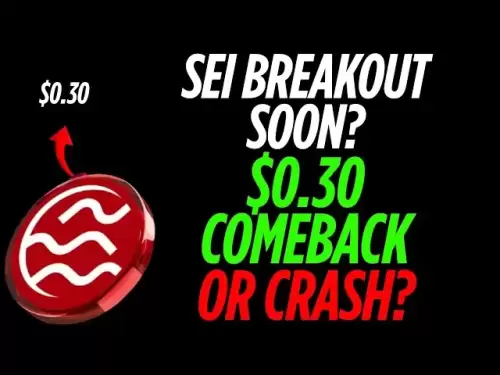-
 Bitcoin
Bitcoin $109,583.2239
0.19% -
 Ethereum
Ethereum $2,583.4612
0.48% -
 Tether USDt
Tether USDt $1.0003
-0.04% -
 XRP
XRP $2.2681
0.70% -
 BNB
BNB $659.9218
-0.52% -
 Solana
Solana $151.4961
-0.37% -
 USDC
USDC $0.9999
-0.02% -
 TRON
TRON $0.2861
1.20% -
 Dogecoin
Dogecoin $0.1718
0.04% -
 Cardano
Cardano $0.5960
-0.07% -
 Hyperliquid
Hyperliquid $40.1233
2.85% -
 Sui
Sui $2.9974
2.48% -
 Bitcoin Cash
Bitcoin Cash $497.1279
-1.76% -
 Chainlink
Chainlink $13.7275
-0.22% -
 UNUS SED LEO
UNUS SED LEO $9.0241
0.70% -
 Avalanche
Avalanche $18.5536
-0.88% -
 Stellar
Stellar $0.2421
1.39% -
 Toncoin
Toncoin $2.8593
-0.51% -
 Shiba Inu
Shiba Inu $0.0...01187
-0.07% -
 Litecoin
Litecoin $90.0023
2.90% -
 Hedera
Hedera $0.1590
2.79% -
 Monero
Monero $322.1495
0.00% -
 Polkadot
Polkadot $3.5453
-1.00% -
 Dai
Dai $1.0000
-0.01% -
 Bitget Token
Bitget Token $4.5733
-1.06% -
 Ethena USDe
Ethena USDe $1.0002
-0.01% -
 Uniswap
Uniswap $7.6345
3.03% -
 Aave
Aave $279.2583
0.47% -
 Pepe
Pepe $0.0...01003
-1.52% -
 Pi
Pi $0.4941
-0.32%
What is order book depth?
Order book depth reveals market liquidity and potential price movements by showing buy and sell orders at various price levels.
Jul 03, 2025 at 08:15 pm

Understanding the Basics of Order Book Depth
In cryptocurrency trading, order book depth refers to a visual representation of all pending buy and sell orders for a specific asset at various price levels. This data is typically displayed in a chart or table format and shows the volume of orders available at each price point. The depth of the order book helps traders understand market liquidity and potential price movements.
When analyzing order book depth, it's essential to look at both sides: the bid side (buy orders) and the ask side (sell orders). A deep order book indicates that there are substantial volumes of orders at multiple price points, suggesting strong support or resistance levels. Conversely, a shallow order book implies fewer orders and potentially more volatile price swings.
Important:
Traders often use this information to make informed decisions about entry and exit points in the market.How Is Order Book Depth Visualized?
Order book depth is commonly visualized using a chart known as a depth chart, which plots cumulative buy and sell orders on an X-axis (price) and Y-axis (volume). This visualization allows traders to see how much buying or selling pressure exists at different price levels.
The left side of the chart represents the bid stack, showing cumulative buy orders below the current market price. The right side illustrates the ask stack, displaying cumulative sell orders above the current market price. When these two stacks intersect, they indicate the current market price.
- Depth charts help identify key support and resistance levels.
- They show how large orders can influence short-term price movements.
- Traders use them to assess whether a market is balanced or skewed toward buyers or sellers.
Note:
Not all exchanges provide identical depth chart interfaces, so understanding your platform’s layout is crucial for accurate interpretation.Why Does Order Book Depth Matter in Crypto Trading?
Order book depth plays a significant role in determining the liquidity of a cryptocurrency pair. High depth means that large trades can be executed without significantly affecting the price, while low depth suggests that even small trades could cause noticeable price fluctuations.
Market makers and institutional investors pay close attention to depth because it reveals where large orders are placed. If there's a massive wall of buy orders just below the current price, it may act as a support zone that prevents further price drops. Similarly, large sell walls above the market price might serve as resistance zones.
- High liquidity ensures smoother trade execution with minimal slippage.
- Large order imbalances can signal potential breakouts or reversals.
- Monitoring depth changes helps anticipate sudden market moves.
Caution:
Some traders manipulate order books by placing fake orders (spoofing), which can distort actual market conditions temporarily.How to Read Order Book Depth Charts
Reading a depth chart involves identifying areas where there are significant concentrations of buy or sell orders. These clusters often represent psychological price levels or historical support/resistance zones.
Start by locating the current market price, usually marked by a horizontal line or dot in the middle of the chart. To the left, you'll find ascending steps representing increasing buy orders at lower prices. To the right, descending steps illustrate rising sell orders at higher prices.
- Look for steep slopes indicating strong liquidity.
- Flat sections suggest thin markets with possible volatility ahead.
- Compare bid-ask spread sizes to gauge immediate supply and demand.
Tip:
Use zoom functions if available to analyze microstructures within the depth chart.Practical Applications of Order Book Depth Analysis
Traders apply order book depth analysis in several ways, including:
- Identifying liquidity pools: Knowing where large orders exist helps determine optimal entry and exit points.
- Detecting order flow patterns: Sudden changes in depth may reveal institutional activity or whale movements.
- Anticipating breakout scenarios: If one side of the book thins out rapidly, a breakout may occur soon after.
For instance, during consolidation phases, traders watch for shrinking depth near support and resistance levels. Once a level breaks, the absence of sufficient orders can lead to rapid price movement in the breakout direction.
- Use alongside candlestick patterns for confirmation signals.
- Incorporate time-based filters to distinguish real orders from spoofed ones.
- Combine with volume profiles for deeper insights into market structure.
Remember:
Always cross-reference depth data with other indicators before making trading decisions.Frequently Asked Questions
Q: Can order book depth predict future price movements accurately?
A: While order book depth provides insight into current market sentiment and potential support/resistance levels, it should not be used in isolation. It reflects existing orders but does not guarantee future outcomes.
Q: Why do some exchanges show different depth charts for the same cryptocurrency?
A: Different exchanges have varying user bases, trading volumes, and order placement behaviors. Additionally, some platforms aggregate data differently, leading to variations in depth chart appearances.
Q: How often should I check order book depth when actively trading?
A: For active day traders, checking depth every few minutes can help track evolving market conditions. However, for swing traders, reviewing depth once per session may suffice unless major news events occur.
Q: Is order book depth useful for long-term investors?
A: Long-term investors may find less value in real-time depth analysis compared to short-term traders. However, understanding general liquidity trends and major order concentrations can still inform better investment timing decisions.
Disclaimer:info@kdj.com
The information provided is not trading advice. kdj.com does not assume any responsibility for any investments made based on the information provided in this article. Cryptocurrencies are highly volatile and it is highly recommended that you invest with caution after thorough research!
If you believe that the content used on this website infringes your copyright, please contact us immediately (info@kdj.com) and we will delete it promptly.
- Crypto's Wild Ride: TOKEN6900, SPX6900, and the S&P 500 Connection
- 2025-07-04 03:50:13
- LUNA Crypto Collapse: From Billions Lost to a Quiet Comeback?
- 2025-07-04 02:35:18
- Briber's Four Forces: Decoding the Dynamics of Crypto Incentives
- 2025-07-04 02:35:18
- Solana DeFi Accumulation: Riding the Wave or Just HODLing On?
- 2025-07-04 02:40:12
- ZKasino's $30M Rug Pull: Founder Arrested in UAE – Justice Served?
- 2025-07-04 00:30:13
- Bitcoin's Bull Run: Standard Chartered and the ETF Inflow Effect
- 2025-07-04 00:30:13
Related knowledge

What is open interest in derivatives?
Jul 03,2025 at 02:49pm
Understanding Open Interest in DerivativesOpen interest is a critical metric used in the cryptocurrency derivatives market, particularly when analyzing futures and options contracts. It represents the total number of outstanding contracts that have not been settled or closed by either party involved. Unlike trading volume, which counts all trades made i...
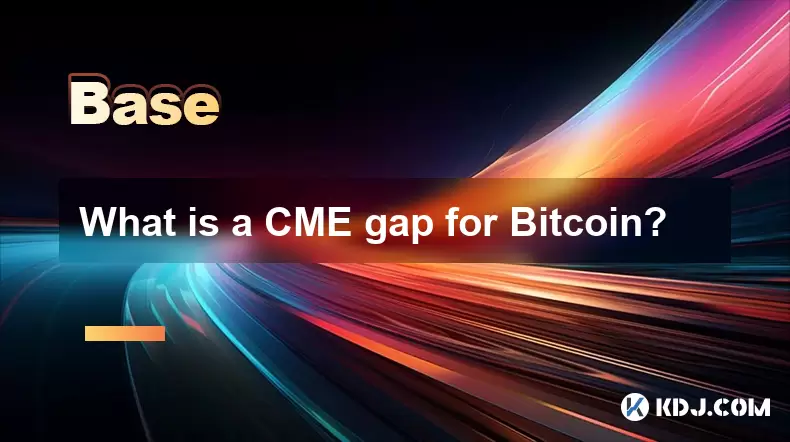
What is a CME gap for Bitcoin?
Jul 03,2025 at 05:49pm
Understanding the Concept of a CME GapA CME gap refers to a discrepancy in price between the closing price of Bitcoin on the Chicago Mercantile Exchange (CME) and its opening price when trading resumes. This phenomenon occurs because the CME operates during specific hours, typically aligned with traditional market hours, while cryptocurrency markets ope...
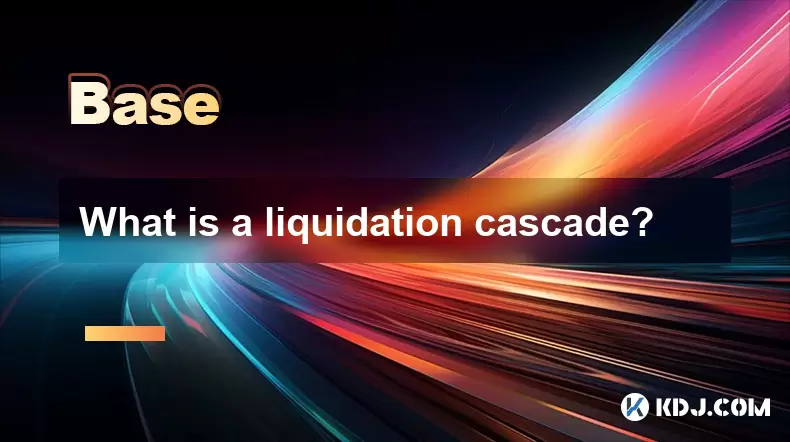
What is a liquidation cascade?
Jul 03,2025 at 07:15am
Understanding the Concept of LiquidationIn the realm of cryptocurrency trading, liquidation refers to the process by which a trader's position is automatically closed due to insufficient funds to maintain the leveraged trade. This typically occurs when the market moves against the trader's position and their account equity falls below the required maint...
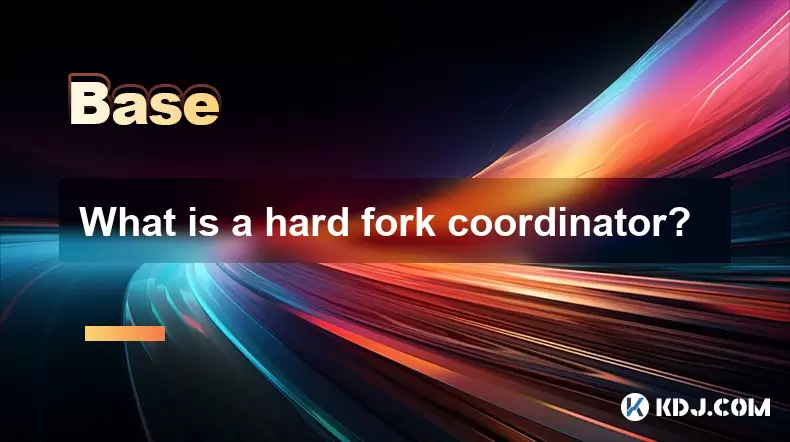
What is a hard fork coordinator?
Jul 03,2025 at 12:42pm
Understanding the Role of a Hard Fork CoordinatorIn the world of blockchain and cryptocurrencies, a hard fork coordinator plays a critical role during major network upgrades. A hard fork is a significant change to a blockchain’s protocol that makes previously invalid blocks or transactions valid (or vice versa). This type of upgrade requires all nodes o...
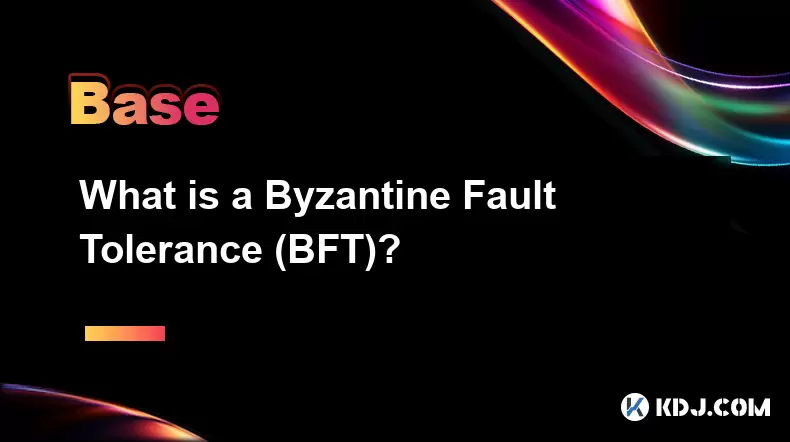
What is a Byzantine Fault Tolerance (BFT)?
Jul 03,2025 at 11:49am
Understanding the Concept of Byzantine Fault ToleranceByzantine Fault Tolerance (BFT) is a critical concept in distributed systems, particularly within the realm of blockchain technology and cryptocurrencies. It refers to the ability of a system to continue functioning correctly even when some components fail or behave maliciously. The term originates f...
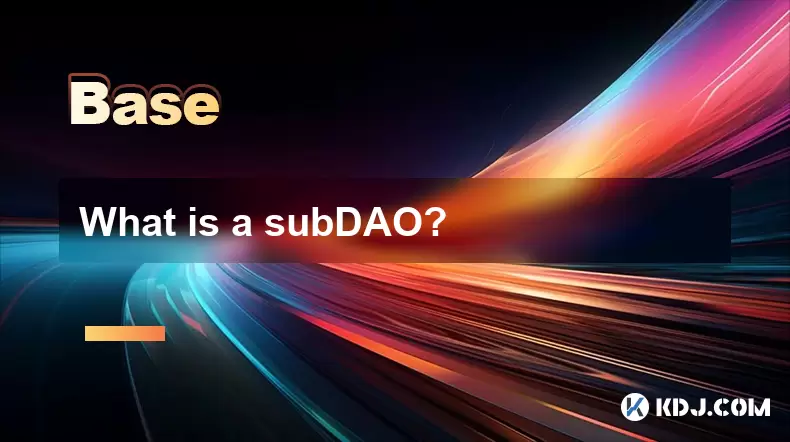
What is a subDAO?
Jul 03,2025 at 09:36am
Understanding the Concept of SubDAOA SubDAO, short for Sub-Decentralized Autonomous Organization, is a specialized entity that operates under the umbrella of a larger DAO (Decentralized Autonomous Organization). It functions with its own set of rules, governance mechanisms, and tokenomics while remaining aligned with the overarching goals of the parent ...

What is open interest in derivatives?
Jul 03,2025 at 02:49pm
Understanding Open Interest in DerivativesOpen interest is a critical metric used in the cryptocurrency derivatives market, particularly when analyzing futures and options contracts. It represents the total number of outstanding contracts that have not been settled or closed by either party involved. Unlike trading volume, which counts all trades made i...

What is a CME gap for Bitcoin?
Jul 03,2025 at 05:49pm
Understanding the Concept of a CME GapA CME gap refers to a discrepancy in price between the closing price of Bitcoin on the Chicago Mercantile Exchange (CME) and its opening price when trading resumes. This phenomenon occurs because the CME operates during specific hours, typically aligned with traditional market hours, while cryptocurrency markets ope...

What is a liquidation cascade?
Jul 03,2025 at 07:15am
Understanding the Concept of LiquidationIn the realm of cryptocurrency trading, liquidation refers to the process by which a trader's position is automatically closed due to insufficient funds to maintain the leveraged trade. This typically occurs when the market moves against the trader's position and their account equity falls below the required maint...

What is a hard fork coordinator?
Jul 03,2025 at 12:42pm
Understanding the Role of a Hard Fork CoordinatorIn the world of blockchain and cryptocurrencies, a hard fork coordinator plays a critical role during major network upgrades. A hard fork is a significant change to a blockchain’s protocol that makes previously invalid blocks or transactions valid (or vice versa). This type of upgrade requires all nodes o...

What is a Byzantine Fault Tolerance (BFT)?
Jul 03,2025 at 11:49am
Understanding the Concept of Byzantine Fault ToleranceByzantine Fault Tolerance (BFT) is a critical concept in distributed systems, particularly within the realm of blockchain technology and cryptocurrencies. It refers to the ability of a system to continue functioning correctly even when some components fail or behave maliciously. The term originates f...

What is a subDAO?
Jul 03,2025 at 09:36am
Understanding the Concept of SubDAOA SubDAO, short for Sub-Decentralized Autonomous Organization, is a specialized entity that operates under the umbrella of a larger DAO (Decentralized Autonomous Organization). It functions with its own set of rules, governance mechanisms, and tokenomics while remaining aligned with the overarching goals of the parent ...
See all articles























